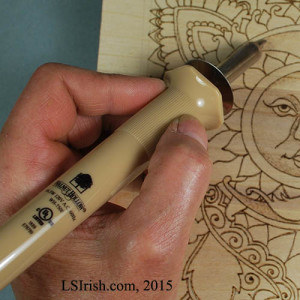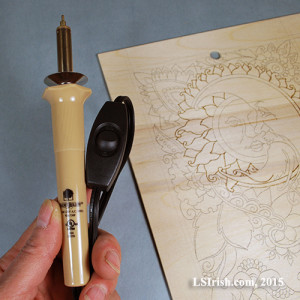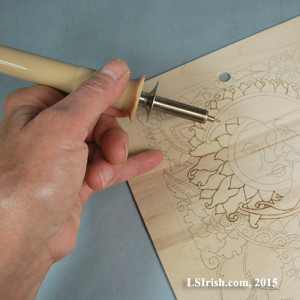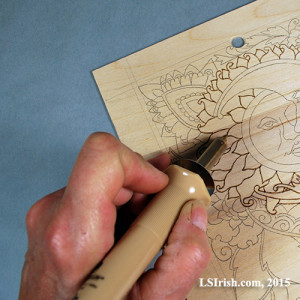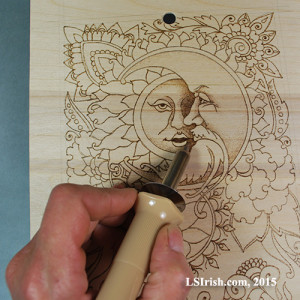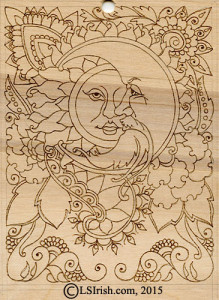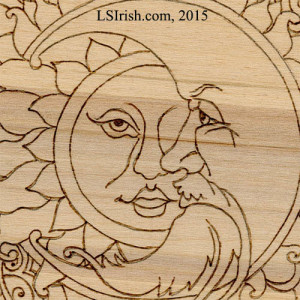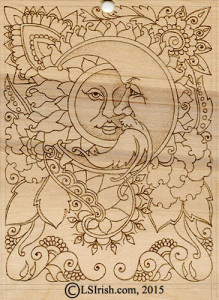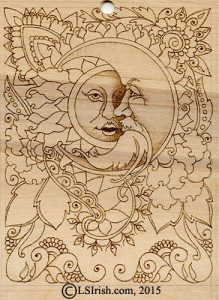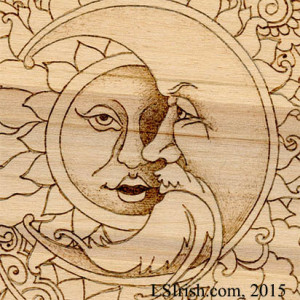Walnut Hollow Woodburner Detailer – 5
We are continuing the step by step instructions for this Henna Moon Pyrography Project and the test drive review of Walnut Hollow’s Woodburner Detailer.
Please click on any image in this post for a full-sized photo.
Henna Moon Pyrography Project
Walnut Hollow Woodburner Detailer – Introduction
Walnut Hollow Woodburner Detailer 2 – History of Henna Tattoos
Walnut Hollow Woodburner Detailer 3 – Tracing the Pattern
Walnut Hollow Woodburner Detailer 4 – Outlining the Design
Our tracing pattern is the line art for just the outlines of each element in this Henna Moon design. During these steps we will work to fill each element and areas inside each element with Henna-styled details and patterns. You can re-burn the same line art outline time and time again, and create new projects by changing which pattern elements you fill with shading and which fill patterns or textures you use in each element.
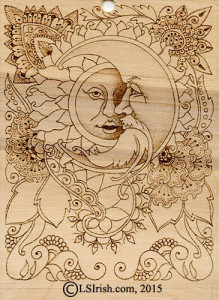 Simple Shading in the Henna Flowers
Simple Shading in the Henna Flowers
Step 9: Henna tattoos often feature stylized flowers, detailed leaves, and repeat patterns of circles, arcs, or triangles. After the outline for each element is complete that element – flower, leaf, scroll – is detailed with small repeat patterns as spiral curls, wavy lines, lattice lines, and stems with bud dots.
I began the inner detailing of my henna tattoo elements by working the four large flowers that surround the Sun and Moon faces. Using a light pressure touch with the pen tip of my Walnut Hollow Detailer and a tightly packed scrubbie stroke I created a pale tonal value shading in the flower petals. That shading is placed at the bottom of each petal where it tucks under another petal. The outer edge area of each petal was left unshaded – unburned. This gives a white area to the upper petal and a dark area to the lower petal.
Note: Even when using simple shading I still want some areas left un-burned to become my white tonal value, some pale sepia tones, some medium tones, and some dark tonal values. In Henna Tattoos that pale and medium tones come from light pressure, fine line strokes. Deep mid-tones and blacks come from touch-and-lift dot stokes. The blackest tones are tightly packed touch-and-lift dots.
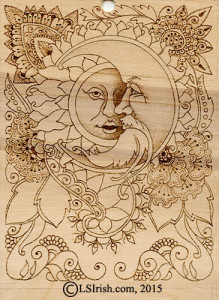 Line Detailing in the Sun Rays
Line Detailing in the Sun Rays
Step 10: The outer ring of sun rays was worked in a simple long wavy line that followed the outline shape of one side of the ray. The sun rays that lie behind the upper curve of the moon are accented with small dots, worked along a diagonal line. This is just a touch-and-lift stroke with the ball tip of the Detailer.
Note: You can use just about any geometric pattern, line pattern, or texture fill stroke to create the detailing inside of your flowers, leaves, and scrolls in Henna Tattoos. So for each flower chose or create a new fill pattern, and use that pattern for each of the petals in the fill. Leaves, paisley-shapes, and scrolls can be either pattern filled or area where you wood burn a small flower and leaf motif.
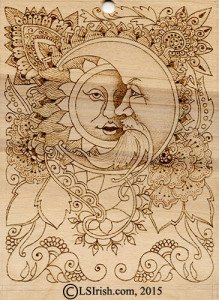 Detailing the Sun Circles
Detailing the Sun Circles
Step 11: A stem-and-bud dot pattern was used in the inner row of Sun rays and a triangular pattern fills the circle that encompasses the Sun face.
Note: As I worked the Sun rays from the outside towards the inner ring near the face I packed my strokes tighter. I have not changed my temperature setting or how much pressure I am using on the pen. Adding more lines into an area darkens the tonal value appearance of that area.
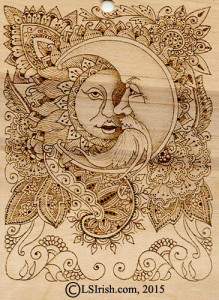 Creating the Leaf Details
Creating the Leaf Details
Step 12: The leaves of a Henna Tattoo are just as decorative as the flower petals or scrolls. One set of leaves uses a line stroke with a circular spot in the center. Another group of leaves has an inner outline with the outer border worked in parallel lines and the inner area in a small flower pattern.
Working the Lower Scroll Element
Step 13: I have added the shading and detailing to the lower scroll element by using a leaf and scallop design inside of the scroll.
Detailer Review: At this point in the burning I have worked for about three hours. The Detailer, throughout this entire time, has never skipped a beat. It has held a consist, constant, even temperature with each and every stroke. As you look at the close-up, below, you can see I still have no hot spots where one line intersects or turns and angle, I have no scorch marks, and my line work is the exact same tonal value throughout the stroke’s pull.
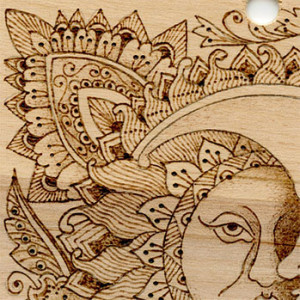 | 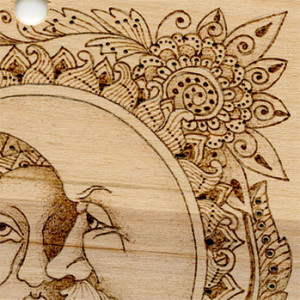 |
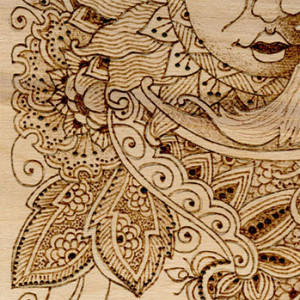 | 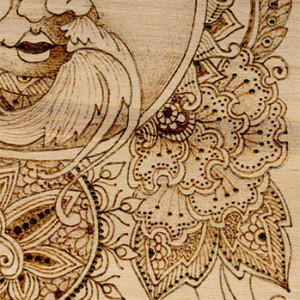 |
I will be posting the final steps to this project tomorrow, Friday, Oct. 30th. We will work the bottom accent elements, then create the pencil guidelines and burn the border trim. Plus tomorrow I will give you my final decision on how the Walnut Hollow Woodburner Detailer has preformed … but, I expect you already know I am totally delighted with its performance throughout this project.
PS – At this point, three hours in, I still have no carbon build-up on the ball tip of the Detailer and not one gray-black carbon smudge because of a dirty tip … big grin!!!!
